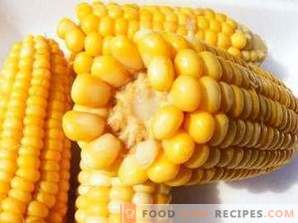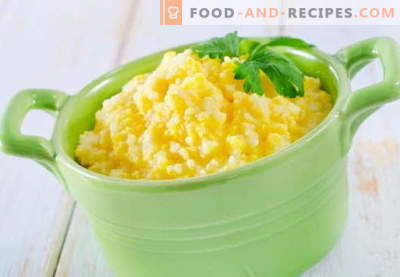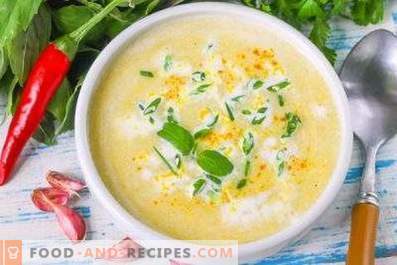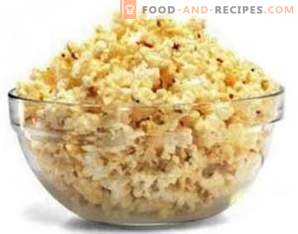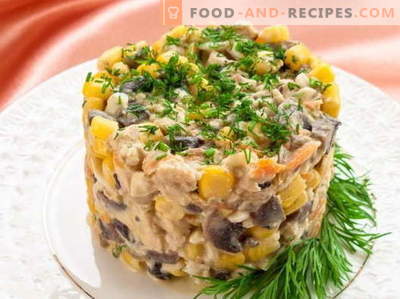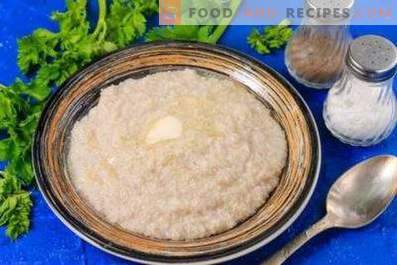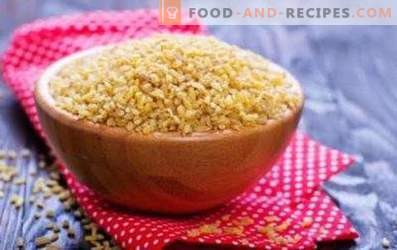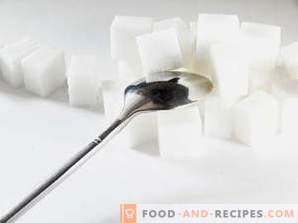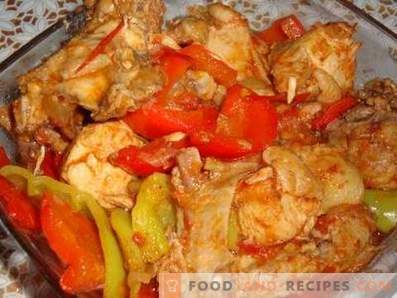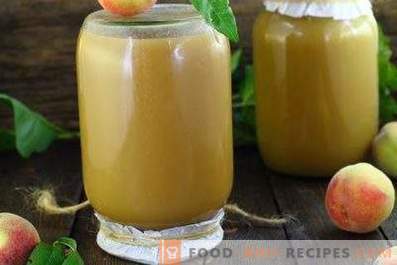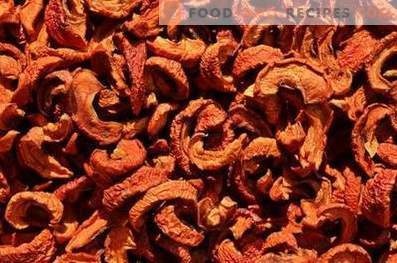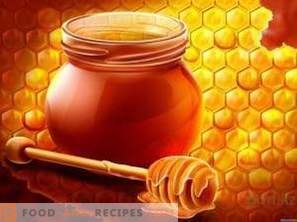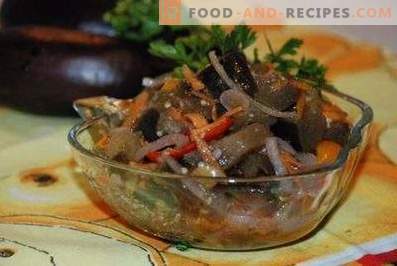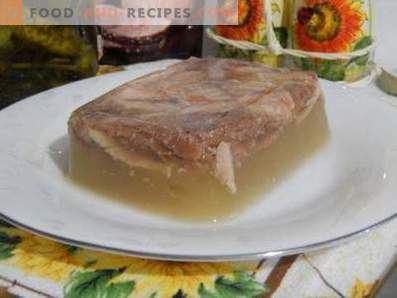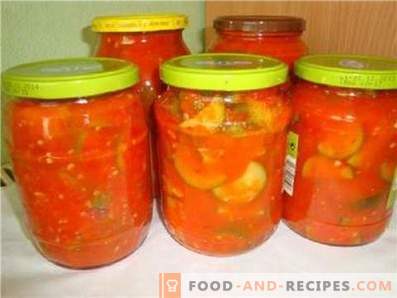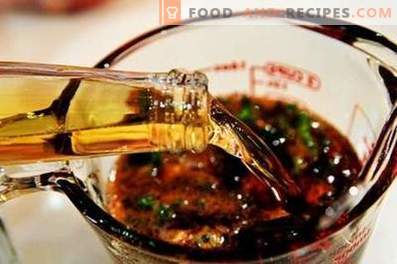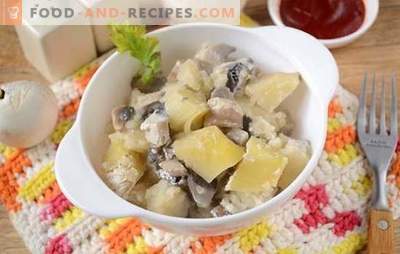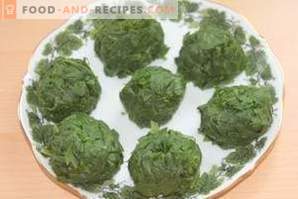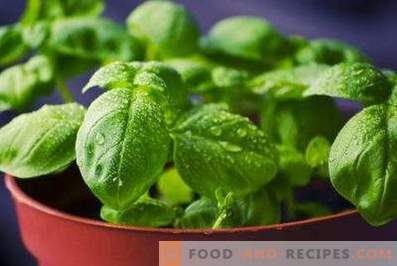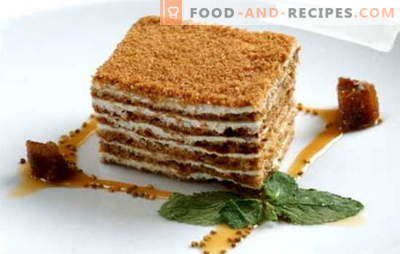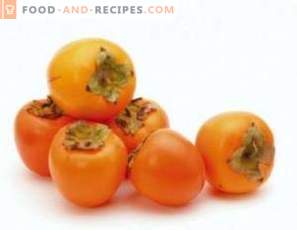
Corn is a plant belonging to the family of cereals. According to researchers, Mexico is the birthplace of this crop: corn kernels grown 5-7 thousand years ago were found on the territory of the modern states of Puebla and Oaxaca. Almost all civilizations of Mesoamerica (Maya, Aztecs, etc.) owe their heyday to the cultivation of maize: it was this plant that allowed the aborigines to engage in highly productive agriculture, which contributed to the emergence of a developed society.
At the end of the 15th century, Christopher Columbus brought corn grains to Spain. In the first quarter of the XVI century, this grass began to grow in most European countries, as well as in China and Africa. Culture was brought to Russia much later - by the end of the XVIII century.
Today, corn is ranked second in terms of sales of grain in the world. The annual world production of this culture exceeds 800 million tons. The United States is the largest supplier of corn to the international market. In addition, China, Brazil, Ukraine, Argentina and Mexico are considered to be the leading producers of corn kernels.
Corn is a valuable product with high nutritional value. Most often, the grains of this plant are eaten boiled and canned, used for cooking vegetable oil, flour, cereals, cereals, soups, salads, popcorn and other dishes. In addition, corn is actively used in the chemical industry, pharmaceuticals and traditional medicine.
Botanical description of corn
Corn is an annual crop with a well-developed bud. Root. The straight reddish-green stem of the plant can reach 6, 5 cm in diameter and 400 cm in height. Large linear lanceolate corn leaves grow to 950 mm in length and 100 mm in width.
Corn - monoecious culture with inflorescences of two types:
- masculine - in the form of panicles in the upper part of the shoots;
- female - in the form of cobs, located in the axils of the leaves.
Usually, two cobs are formed on one plant, having a weight of 28-450 g, a length of 40-480 mm and a diameter of 18-95 mm. Each female inflorescence is densely surrounded by green and whitish leaf-like wrappers. In the upper part of the cob a bundle of corn stalks with stigmas (the so-called “corn hair”) comes out from under the wrapping.
Corn grains have a round or cubic shape, yellow, white, reddish, orange, purple or almost black. The weevils are located on the core of the cob in dense vertical rows. On one inflorescence can form up to 1000 corn kernels.
Nutritional value of corn and vitamins in the composition of its kernels
Nutritional value 100 g of corn:
- 3, 168 g of proteins;
- 1, 118 g of fat;
- 18, 962 g of carbohydrates;
- 2, 613 g of fiber;
- 74, 216 g of water;
- 7, 093 g of dextrins and starch;
- 0, 608 g of ash;
- 3, 219 g of sugars (mono, disaccharides);
- 0, 017 g of omega-3 fatty acids;
- 0, 539 g of omega-6 fatty acids.
Vitamins per 100 g of corn kernels:
- B2, riboflavin - 0, 058 mg;
- C, ascorbic acid - 6, 721 mg;
- B5, pantothenic acid - 0, 744 mg;
- K, phylloquinone - 0, 274 mcg;
- B9, folates - 45, 064 mcg;
- B1, thiamine - 0, 184 mg;
- E, tocopherol equivalent - 0, 062 mg;
- PP, niacin equivalent - 1, 619 mg;
- B6, pyridoxine - 0, 053 mg;
- beta-carotene - 0, 001 mg.
Caloric value of corn
The energy value of 100 grams of raw corn kernels is 98, 694 kcal. A medium-sized corn cob contains about 140 grams of grains. Thus, its approximate calorie content is 138 kcal. The energy value of products and dishes prepared from corn kernels is (kcal per 100 g):
- boiled corn - 97, 314;
- corn oil - 898, 621;
- canned corn - 103, 492;
- corn bread - 261, 338;
- steamed corn - 98, 102;
- corn grits - 336, 106;
- dried corn - 334, 923;
- corn flour - 336, 094;
- corn porridge - 98, 404.
Salted popcorn contains 402, 823 kcal, sweet - 408, 418 kcal (we are talking about 100 g portions). Calorie cornflakes - 356, 204 kcal per 100 g
Useful items in corn
Macroelements per 100 g of corn:
- Ca, calcium - 1, 922 mg;
- Na, sodium - 14, 263 mg;
- K, potassium - 271, 091 mg;
- Ph, phosphorus - 88, 122 mg;
- Mg, magnesium - 36, 924 mg.
Trace elements per 100 g of corn kernels:
- Mn, manganese - 0, 163 mg;
- Se, selenium - 0, 521 mkg;
- Fe, iron - 0, 513 mg;
- Zn, zinc - 0, 442 mg;
- Cu, copper - 53, 112 μg.
Useful properties of corn beans
- Corn kernels are a rich source of fiber. Moderate consumption of this product contributes to the improvement of the contractile and secretory activity of the digestive tract, accelerated elimination of toxins, radionuclides, poisons and slags from the body.
- In corn there are carotenoids that increase visual acuity and normalize the work of the visual apparatus.
- Regular consumption of corn kernels allows you to timely fill the body's need for magnesium, potassium and other nutrients that positively affect the work of the cardiovascular system. Due to this, you can reduce the risk of strokes, heart attacks and other cardiac diseases.
- Vitamins of group B, which enter the body during consumption of maize, help to cope with increased irritability, prevent the development of depressions and neuroses, and easily overcome the effects of stress and psycho-emotional overload.
- Corn kernels - the richest source of compounds that strengthen the immune system. Fans of dishes prepared on the basis of this cereal are less likely to experience manifestations of colds and infectious diseases.
- Corn contains a complex of nutrients that are indispensable in the fight against somnologicheskimi violations. People who have difficulty falling asleep are recommended to eat 1/2 cup of its grains daily 3 hours before bedtime.
- Corn kernels contain compounds that prevent the development of putrefactive processes in the stomach and intestines.
- Corn is a rich source of selenium, vitamin E and other nutrients with antioxidant properties. With regular inclusion in the menu of this product, the risk of the development of tumor neoplasms is reduced, the aging of body tissues is slowed down.
- Substances present in the corn kernels neutralize the harmful effects of alcohol.
- Corn is a rich source of substances that accelerate the recovery of the body after high loads (mental, physical) and nervous exhaustion.
- In traditional medicine, fresh corn kernels, fried in a hot frying pan with honey, are considered an effective remedy for diarrhea. The medicine is taken in 1 tbsp. l once every 2 hours, washing it down with heated water.
- Boiled corn flavored with corn oil is an effective remedy for constipation.
- Folk healers prepare a medicine that lowers blood pressure from the ground grains of this cereal. Corn flour is diluted with warm water 1: 2 and insist 25 hours in a cool place. The resulting mixture is drunk 4 sips per day.
- The corn kernels boiled and ground into mashed potatoes accelerate the regeneration of the gastric mucosa. Nutritionists advise people suffering from gastritis to regularly include this dish in the diet menu.
- Useful compounds contained in corn, normalize the work of the female reproductive system, eliminate irregular menstruation, weaken the unpleasant symptoms of menopause.
- Folk healers advise men who have experienced abnormalities of potency to include corn porridge in their menu at least twice a week.
- Flour prepared from corn kernels is actively used for cosmetic purposes. On its basis, masks are prepared to get rid of unwanted pigment spots, acne and skin irregularities. To do this, dilute the flour with boiled water 1: 3, give the mass a little swell and put it on the previously cleaned area of the skin. After 15 minutes, the composition is washed off and the skin is treated with corn germ oil. Less commonly, corn flour is used to make moisturizing and tightening masks. Egg yolk is combined with ground corn kernels and honey (1 tbsp), squeeze lemon juice into the resulting mass and beat it with a blender. The finished mask is applied to the face for a quarter of an hour.
Benefits of corn oil
- Corn oil is an effective herbal remedy for atherosclerosis. In order to remove excess cholesterol from the body, it is enough to take it for 3 tablespoons per day.
- Oil obtained from germs of mature corn seeds helps reduce the risk of developing dermatological diseases. For prophylactic purposes it is necessary to drink a sip of this drug per day.
- Corn oil is used in the treatment of diseases of the gallbladder. Two small sips of this drug per day help to improve the tone of this organ, increase the contractile activity of its walls, and normalize the functioning of the sphincter of Oddi.
- The germ oil of corn kernels is used as an adjuvant for internal use in the treatment of diabetes.
- Corn oil contains a whole complex of compounds that improve the condition of the skin, hair and nails.
Contraindications and harm to corn
- Corn kernels can provoke allergic reactions. If you are hypersensitive to this product or if you are prone to an allergy to vegetables, you should exclude dishes based on this cereal from the menu.
- Abuse of corn provokes bloating, the development of flatulence, violation of the chair.
- Corn kernels are contraindicated in acute exacerbations of duodenal or gastric ulcers.
- Substances contained in corn increase blood coagulation. People who are prone to developing thrombophlebitis or vein thrombosis should exclude dishes from this product from the menu.
- Corn oil is a high-calorie product, the abuse of which can lead to obesity.
- Pediatricians recommend that women who are breast-feeding babies eat no more than 1-2 corn cobs per week. Abuse of this product can lead to the development of colic and flatulence in the baby.
